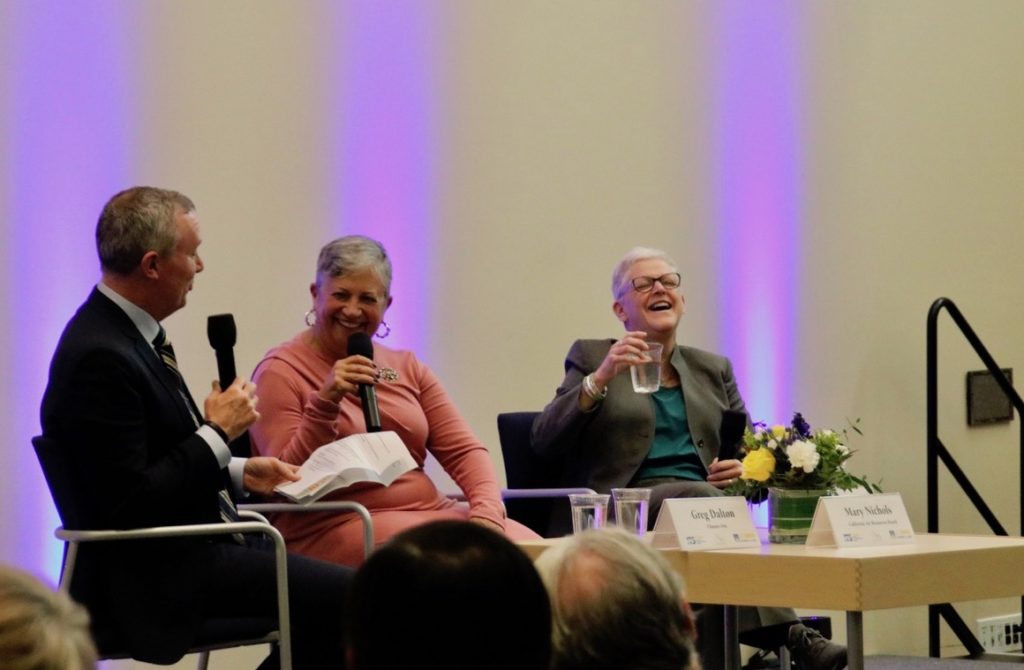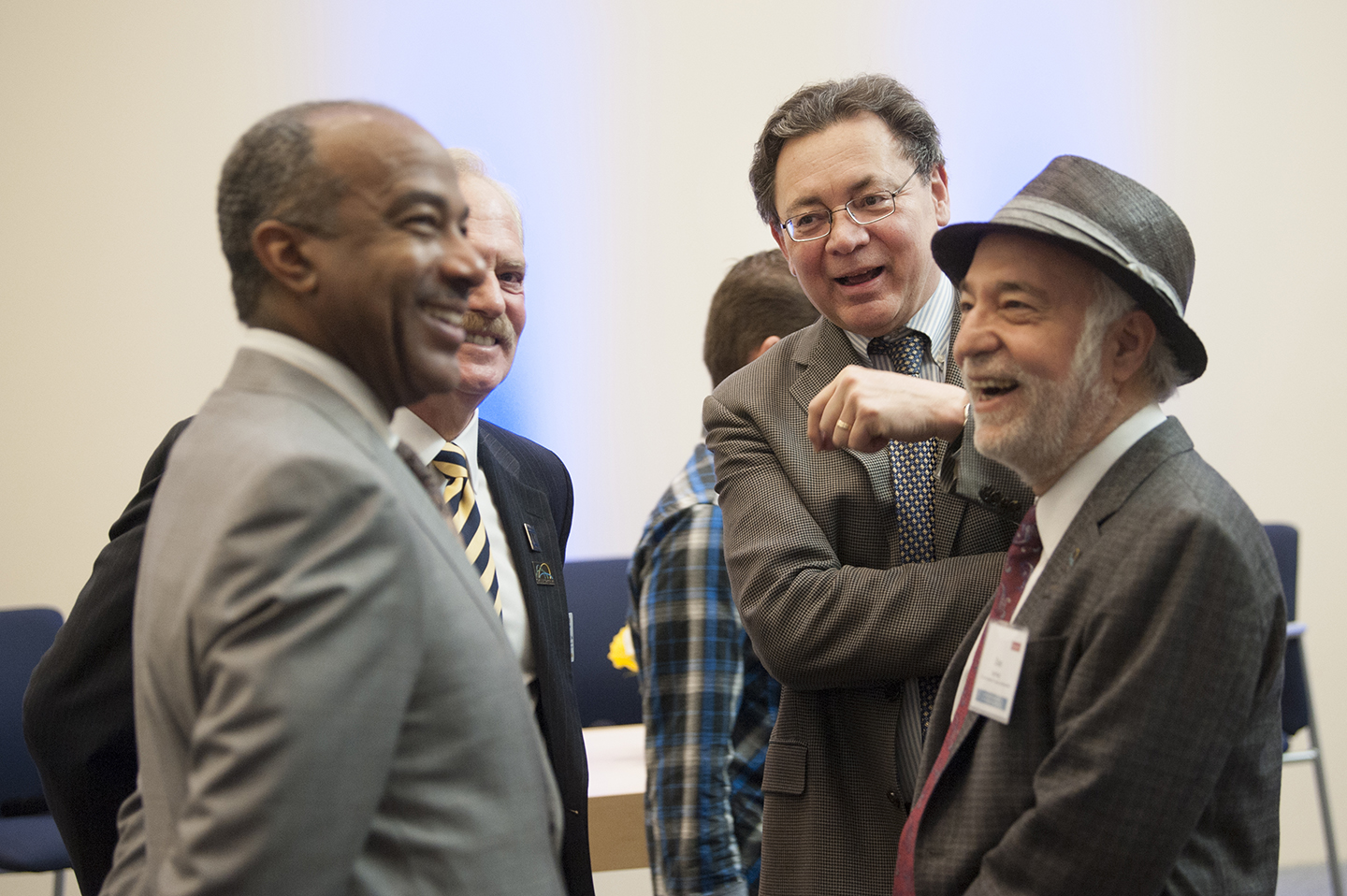Commemorating the California Air Resources Board’s 50th Anniversary
Celebrating CARB’s Past Achievements; Charting Its Future Course
Recently, the U.C. Davis School of Law’s California Environmental Law & Policy Center hosted a major conference on the UCD campus commemorating the California Air Resources Board’s 50th anniversary. The event, which drew nearly 400 attendees, was the result of a terrific, three-way collaboration between CELPC, UC Davis’ Institute of Transportation Studies and CARB. (Here’s a link to the full conference proceedings: http://cal-span.org/unipage/?site=cal-span&owner=CARB&date=2018-01-19)
CARB convened for the first time in January 1968, following enabling legislation prompted by the chronic, crippling smog that enveloped Southern California, its residents and economy in the 1950’s and `60’s. The Board quickly became a national and international leader in air pollution regulatory strategy and pollution control technologies for stationary and vehicular sources alike. That leadership was reflected in the 1970 Clean Air Act, when Congress granted California–alone among the states–the authority to adopt vehicle emission standards more stringent than those promulgated by the federal government. (Attendees were reminded at the “CARB at 50” conference that this longstanding federal deference to California auto emission standards is due in large part to strong and successful lobbying by then-California Republican Governor Ronald Reagan.)
Of critical importance, the conference organizers didn’t want to simply celebrate CARB’s 50th anniversary. At least as important, the conference organizers focused on future challenges and opportunities likely to confront CARB over the next half century. The conference agenda reflected those dual goals.

The conference opening address was delivered by California Governor Jerry Brown. Governor Brown reminisced that in his first term as California’s Governor in the 1970’s, he plucked from relative obscurity a young environmental lawyer named Mary Nichols and appointed her to lead the then-fledgling California Air Resources Board. After Brown left the Governorship in 1983, Nichols’ career (to quote a Los Angeles Times profile) “resembled a grand tour of California’s environmental world: opening the Natural Resources Defense Council’s Los Angeles office, leading the Environment Now Foundation, serving as Resources Agency Secretary for Governor Gray Davis”…and then detouring to Washington D.C. to lead USEPA’s air pollution regulatory program under President Clinton.
While it was a subsequent Republican Governor of California, Arnold Schwarzenegger, who appointed Nichols to her second tour of duty as CARB Chair in 2007, Governor Brown noted that he had the good sense to retain Nichols in that leadership role when Brown returned to serve his unprecedented third and fourth terms as Governor beginning in 2011.
Governor Brown spend a considerable portion of his opening address focusing on CARB’s and California’s “existential challenge” of climate change. He acknowledged CARB’s visionary and effective role in leading the state’s pioneering, multifaceted strategy to reduce California’s greenhouse gas emissions. But Governor Brown put that past success in perspective by noting that as a result of climate scientists’ recent findings, the pace of climate change and its “nonlinear consequences” will require far more aggressive steps in the future. Specifically, the Governor declared that California will likely have to not only reduce its future GHG emissions to zero, but ultimately secure negative GHG emissions through carbon sequestration and extraction technologies.
Another highlight of the conference was CARB Chair Mary Nichols’ reflections on the past successes of the Board, and on the challenges that lie ahead. One of her more interesting observations was that while CARB’s cap-and-trade system “is a hard program to love,” it’s an essential element of the Board’s GHG reduction toolkit. Nichols was ably assisted in her presentation by former USEPA Administrator Gina McCarthy, who reminisced about her and USEPA’s past, successful collaborations with CARB in addressing both conventional air pollutants and GHG emission strategies. McCarthy, now a professor at Harvard University, urged CARB and the State of California to continue its aggressive and innovative leadership on both fronts, which she declared to be especially necessary in the face of the current presidential administration’s inaction and environmental rollbacks.

Assessing CARB’s future challenges and opportunities was the focus of a “young visionaries” panel that focused on “Reaching 2050 Today: The Path to Our Cleaner Future.” California State Senator Henry Stern, Climate Works Foundation’s Anthony Eggert, Dream Corps CEO Vien Truong and NRDC Director of Transportation and Climate Amanda Eaken engaged in a wide-ranging discussion of future California’s future energy, transportation, land use and environmental justice priorities on which they urged CARB to focus in the years and decades to come.
The California Air Resources Board has achieved a truly remarkable record of success over the past half century. California’s air quality today is roughly 95% better than it was when the Board first convened in 1968. Air pollution control technologies pioneered by CARB in California have been replicated nationally and internationally. In 2004, CARB enacted the world’s first GHG emission reduction standards for motor vehicles, which was only the start of a multitude of innovative and successful Board regulatory strategies to address the overarching environmental challenge of our time–climate change. And, last but not least, CARB demonstrated that it is a regulator with considerable bite when the occasion requires it–as the Board amply demonstrated in responding to Volkswagen’s fraudulent “gaming” of emissions control systems in the diesel vehicles VW marketed in California and worldwide.
In my opinion, CARB is California’s single most effective and successful regulatory agency. Over the past five decades, the Board has proven itself a model of thoughtful, effective regulatory policy for other states, the federal government and the global community.
Happy 50th birthday, California Air Resources Board! Here’s to another half century of vision, innovation and regulatory success.








Reader Comments